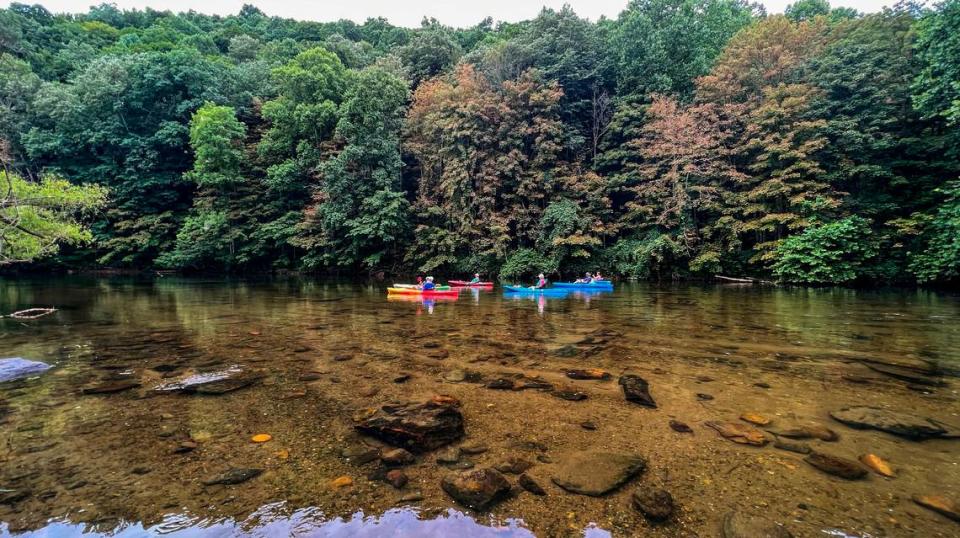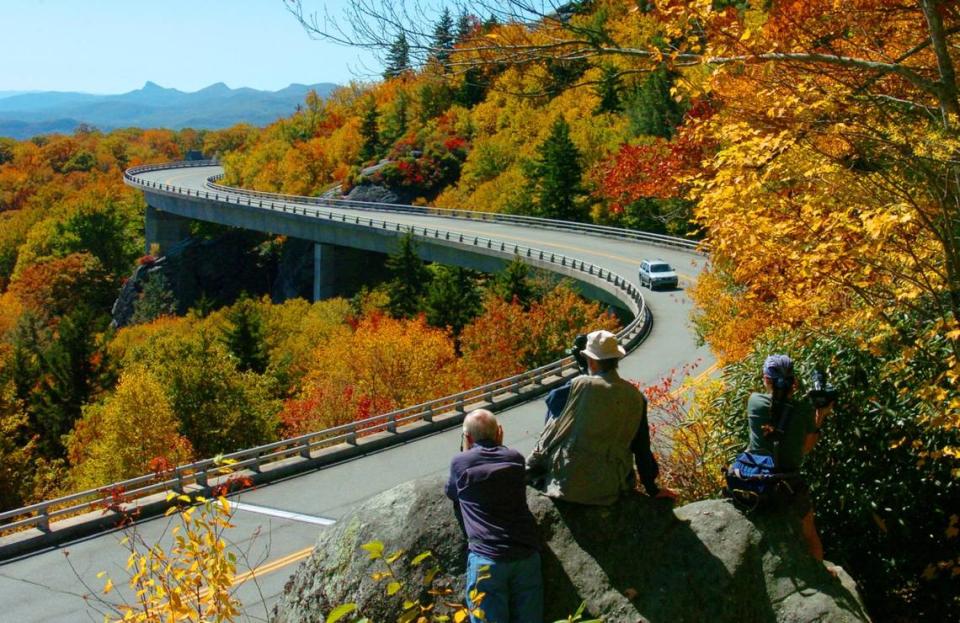Blue Ridge Parkway road closures mean new detours. Here’s what to see along the way
The Blue Ridge Parkway finally attacked its long-neglected Honey-Do list on a stretch of the scenic highway between Grandfather Mountain and the Virginia border Monday, meaning drivers may see delays and a detour through nearby communities.
Visitors to this most-visited National Park still will have access the popular attractions on the parkway while repairs are being made; it will just take a bit longer and a few extra miles of driving to reach them. And since the work is expected to take until September 2025, we might as well make the most of the re-routing and enjoy some extra stops along the way.
The Parkway sees most of its visitors from April through November, with October being the busiest as people come to see mountain slopes dressed in the colors of changing leaves. Weekdays are noticeably less busy than weekends. But throughout the year, it’s intended to be a slow ride. The top speed allowed is 45mph and many days, traffic moves much slower.
Be patient. Look around. Roll down the windows and get a good look at the wildflowers. Listen to the birds. Stop at the overlooks.
Pro Tip: It can be a long and winding way between places to buy gas near the Parkway. Fill up before you start along the route so you can watch the scenery and not the gas gauge.
Here’s what you need to know.
What part of the Blue Ridge Parkway is being repaired?
The $98 million project, funded by the Great American Outdoors Act, will focus on repaving and rehabilitating 75 miles of the parkway from just north of the entrance to Grandfather Mountain to where the road meets U.S. Highway 21 about 10 miles from the Virginia border.
What’s being fixed? Besides repairs to potholes, cracks and breaks in the pavement, work also will be done to fix drainage problems, curbs, walks, shoulders, guardrails, overlooks and signage, according to a Parkway release.

Are tourist destinations still accessible?
The 75-mile zone where these projects are located includes some of the most popular stops along the parkway, which you can find using this interactive map: the Tanawha Trail; Julian Price Campground and Lake, and Price Picnic Area; Cone Manor and Moses Cone Memorial Park; Cascade Falls; Northwest Trading Post; Bluffs Coffee Shop and Picnic Area; Doughton Park Campground; and Brinegar Cabin.
Each of these will remain open and accessible, though to reach them, drivers may have to detour off the Parkway, get back on at another point and drive back to the attraction.
What can you see or do along Parkway detours?
▪ NC’s “Coolest Corner”: One of the sections of the Parkway that will be fully closed runs north from where it meets with U.S. 421 about 12 miles east of Boone, near Deep Gap. Northbound travelers will be detoured onto nearby U.S. 221 toward the towns of Jefferson and West Jefferson in Ashe County.
West Jefferson bills itself as “The Coolest Corner” of North Carolina, whose walkable downtown has a dozen galleries along with craft shops and restaurants, including some that host live music. There’s also the Ashe County Cheese Factory and Shop. And the town hosts the Christmas in July street fair over Independence Day weekend.
▪ Shop for handmade crafts: From there, travelers can get back to the Parkway via N.C. Highway 16, allowing an opportunity to shop the fine handmade crafts and preserves sold at the Northwest Trading Post. The Parkway is open northbound from there for about 10 miles before another full closure, which will require drivers to turn around and go back.
▪ Beautiful (but different) vistas: Or, you could stay on the main detour, which leaves West Jefferson and follows N.C. 88 to the New River, where you could reserve a kayak or a tube for a float downstream. Past the river, the N.C. 88 detour continues to the town of Sparta, offering scenery often as beautiful as what’s visible from the Parkway, but totally different; the Parkway traces the ridge lines, and N.C. 88 runs near the streams in the valleys.
▪ Coffee break: The next chance to get back onto the Parkway going north is via N.C. Highway 18. From there is a section with only one lane open, so at busy times there will be a wait, but that section includes the Bluffs Coffee Shop, an original Blue Ridge Parkway concession that opens for the season May 26, as well as Doughton Park and Brinegar Cabin.
Just past Brinegar Cabin, the Parkway shuts down completely again, so drivers have to double back to N.C. 18, journey north to Sparta and then follow U.S. 21 back to the Parkway. At that point, the Parkway is fully open heading north to Virginia.

▪ Linn Cove: Going south from the intersection with U.S. 421 near Deep Gap, travelers will find about 5 miles of one-lane road, followed by an unfettered section and then another stretch of one-lane road through the area from just north of Cone Manor to just south of Linn Cove, where you can marvel at the Linn Cove Viaduct, an engineering feat popular with tourists. This area is often congested anyway, so one-lane travel could cause considerable slowdowns, but all the attractions will continue to be open.

